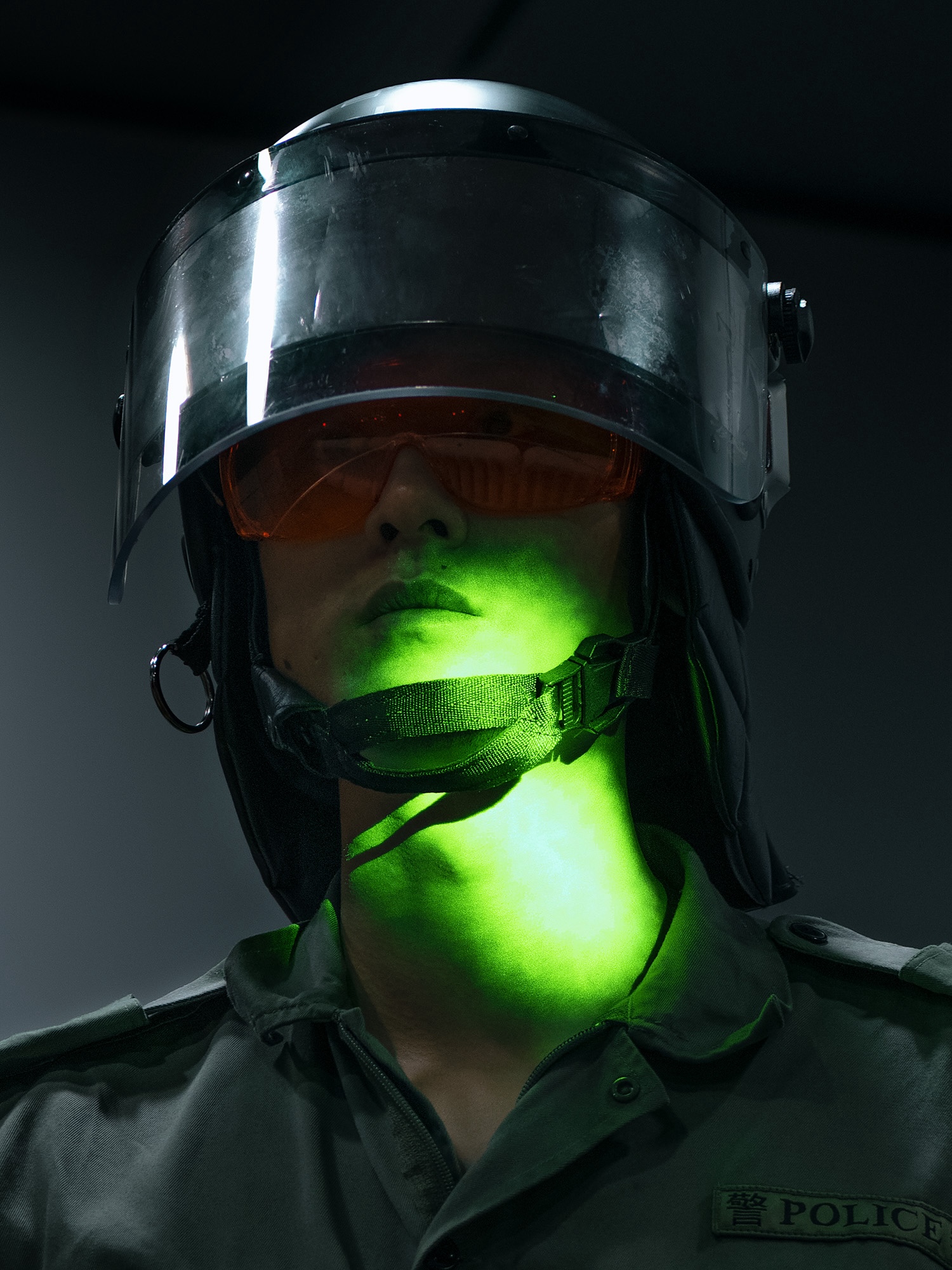All images © Thaddé Comar
One degree removed from the media, the French-Swiss photographer is making work questioning the power of images
In late October/early November 2008, the French high-speed railway network was disrupted when iron bars were placed on its overhead power cables. Delaying over 150 trains, the sabotage was denounced as ultra-left terrorism, perhaps aimed at disrupting the transport of nuclear waste. Shortly afterwards, nine alleged saboteurs based in Tarnac, rural France, were arrested. Characterised by the police as an anarchist cell, the ‘Tarnac Nine’ were said to have used the village as an operational base, and shunned mobile phones to evade detection.
The group was also said to be involved with The Invisible Committee, the anonymous author of an anti-capitalist tract, The Coming Insurrection, published in 2008. “Nowadays, sabotaging the social machine with any real effect involves reappropriating and reinventing the ways of interrupting its networks,” reads one section of the text. “How can a TGV line or an electrical network be rendered useless? How does one find the weak points in computer networks, or scramble radio waves and fill screens with white noise?”
A long and complicated legal case ensued, but in August 2015 a judge ruled that the terrorist charges against the Tarnac Nine should be dropped. In April 2018, they were also acquitted of the other serious charges against them, including sabotage and conspiracy. “The hearing has allowed it to be demonstrated that the Tarnac group was a fiction,” stated the leading judge in the case (quoted in The Guardian). The nine individuals had also long denied being involved with The Invisible Committee.
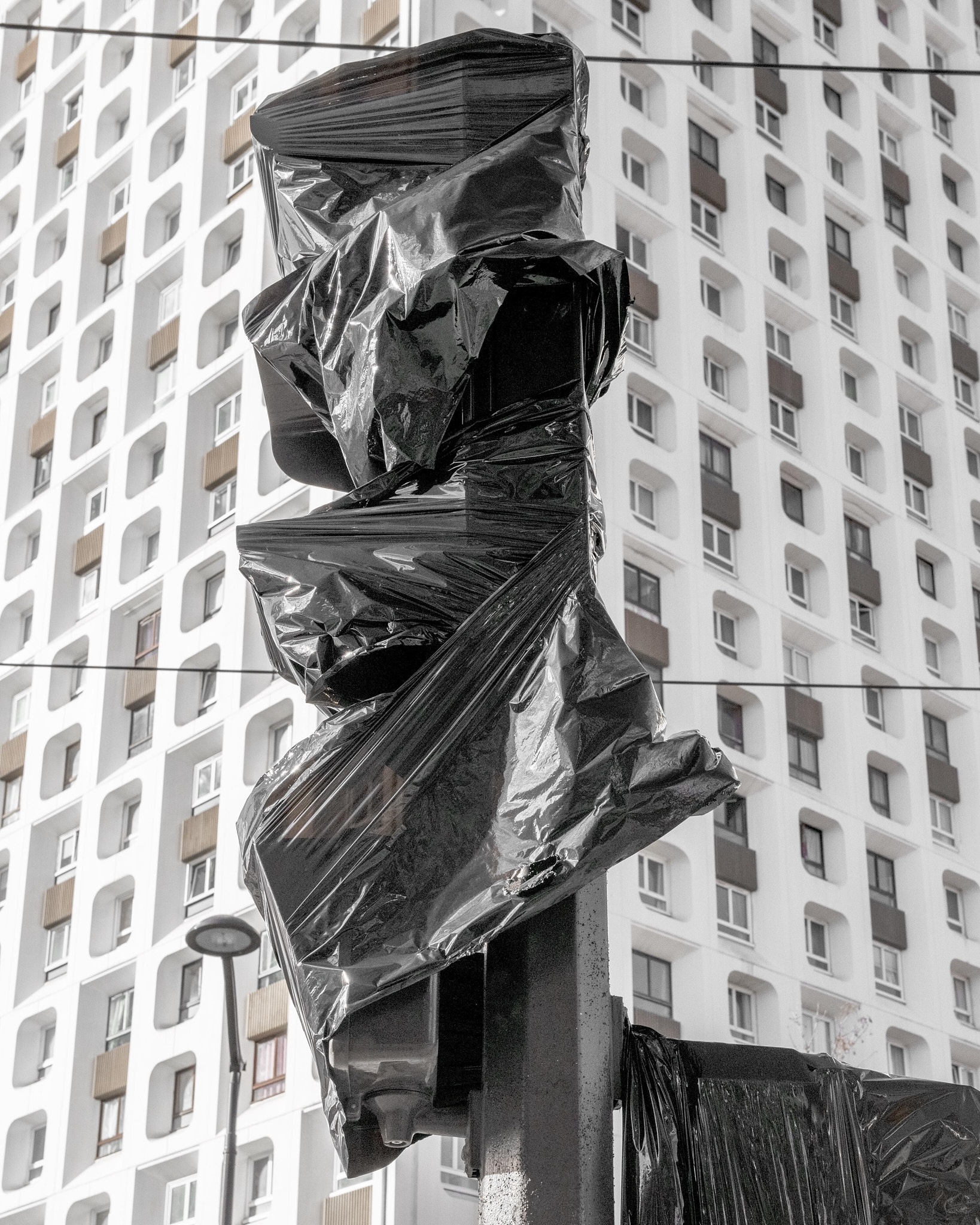
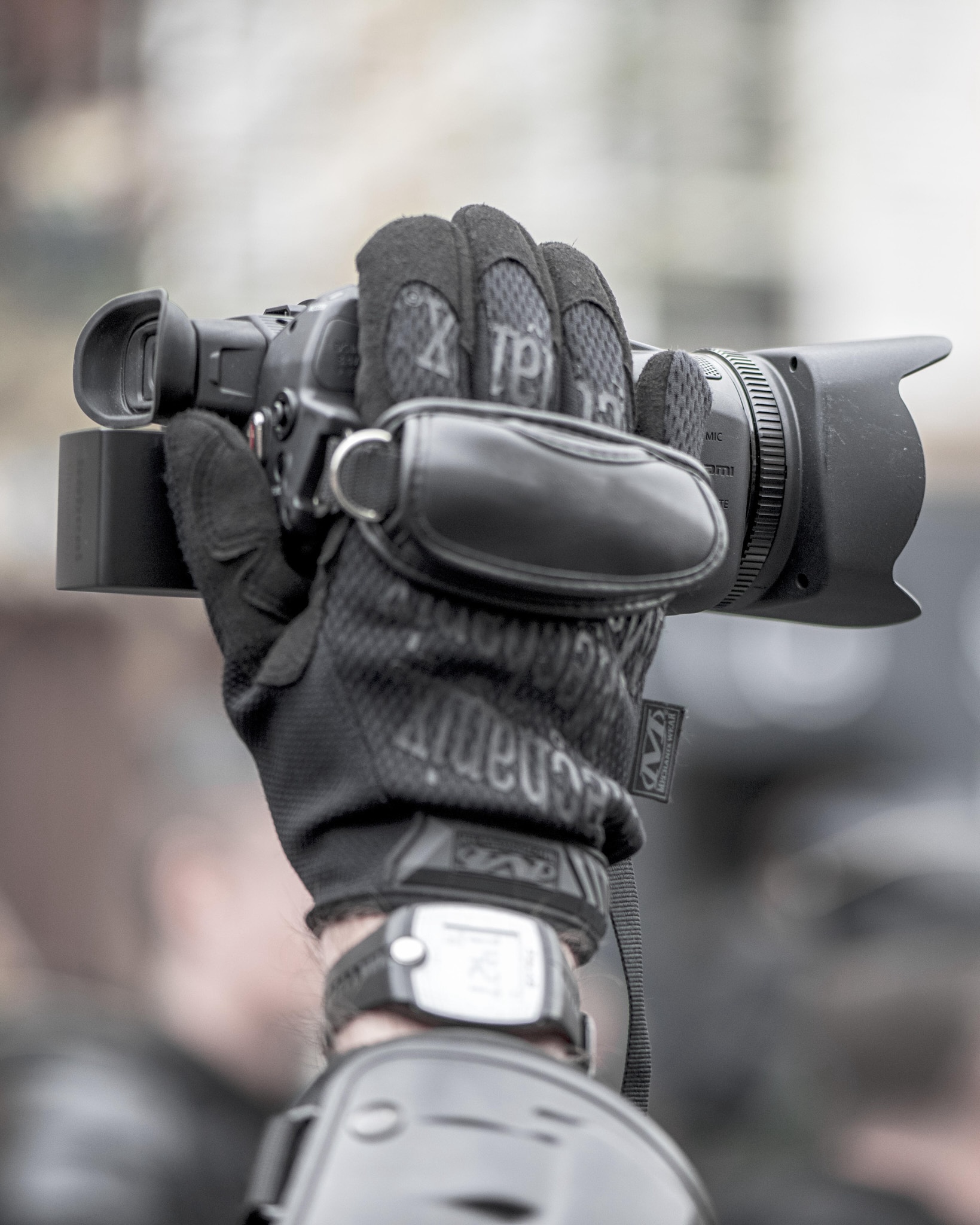
“We are getting information through a process that is very artificial and with massive manipulation. And the way we are getting this news and information makes it seem very separate to us, like it’s a bubble that is hard to touch”
A strange mix of left-wing politics and right-wing establishment bias, this case fascinated Thaddé Comar, a young French-Swiss artist then studying photography at ECAL, Lausanne. Curious about the representation of the so-called saboteurs, he went to Paris’ Palais de Justice and saw Jérémie Assous, the lawyer defending one of them, speaking to the media outside. Smartly dressed and standing in front of a former royal palace, Assous was surrounded by an enormous press pack wielding long-lens cameras and microphones.
“It was the first time I had witnessed so much media surrounding one lawyer, and I found it fascinating,” says Comar. “I had seen images, but now I was living it myself. When you’re wearing this black suit, with this tie, and behind you, you have this grand courthouse, it is all a staging process – a way of staging information and power, a theatre. I wasn’t really interested in photographing Assous, because I didn’t have to sell my pictures [to a newspaper], I was more interested in this whole hustle. So I put myself as high as I could and tried to get different angles on the media machine.”
Back in Lausanne he started to assemble the shots in a single image, surrounding Assous with a nest of journalists and equipment that was absurd, yet at first sight also credible. Comar wanted to make an image that was “spectacular and catchy, so that anyone who looked at it would have to look twice”, and the impulse became an ongoing project. From 2019 to 2024 he returned to the Palais de Justice in Paris and to the French National Assembly (part of the French Parliament), photographing powerful politicians and lawyers as they spoke with the press; back at home he amassed them into seamless fictions.
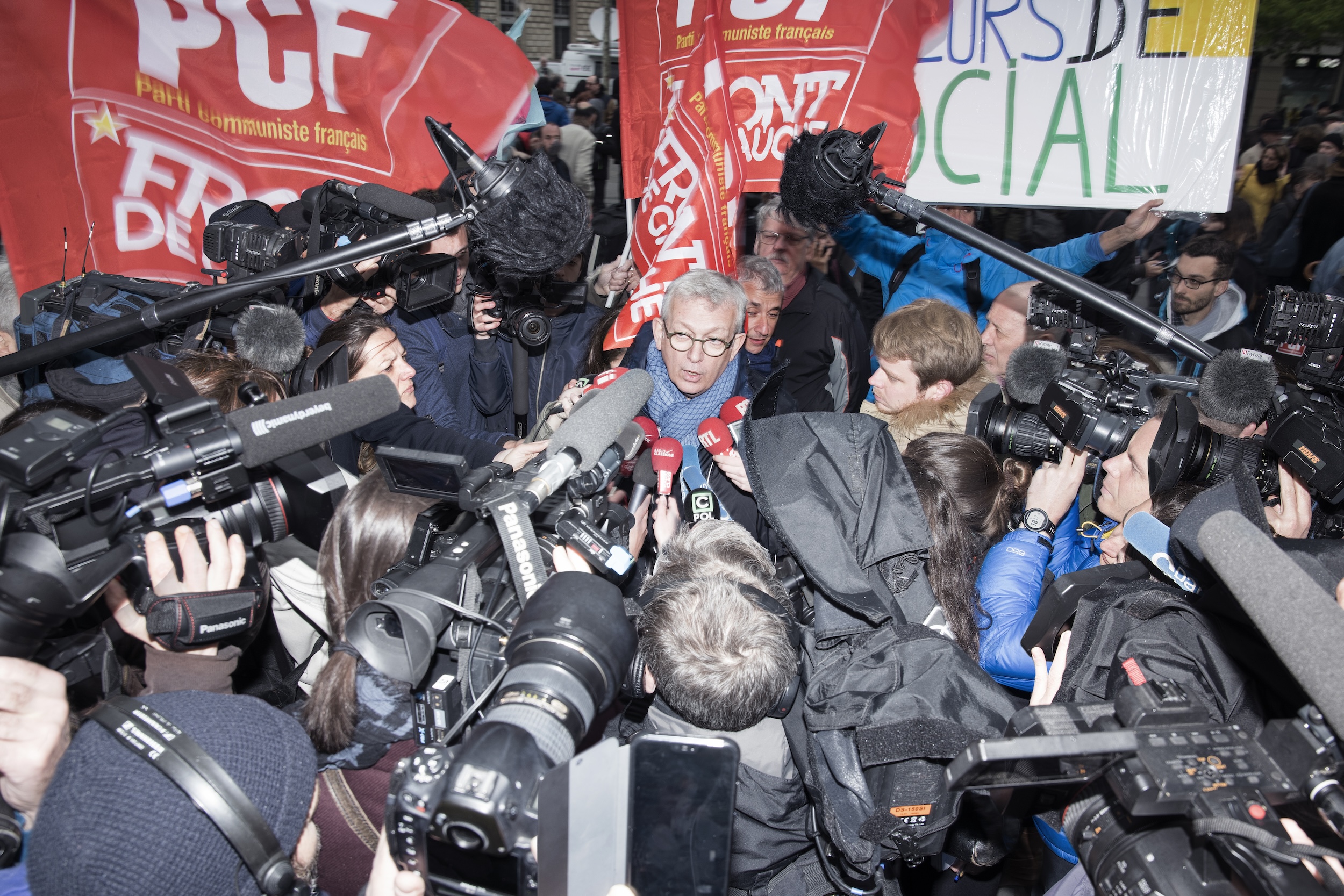
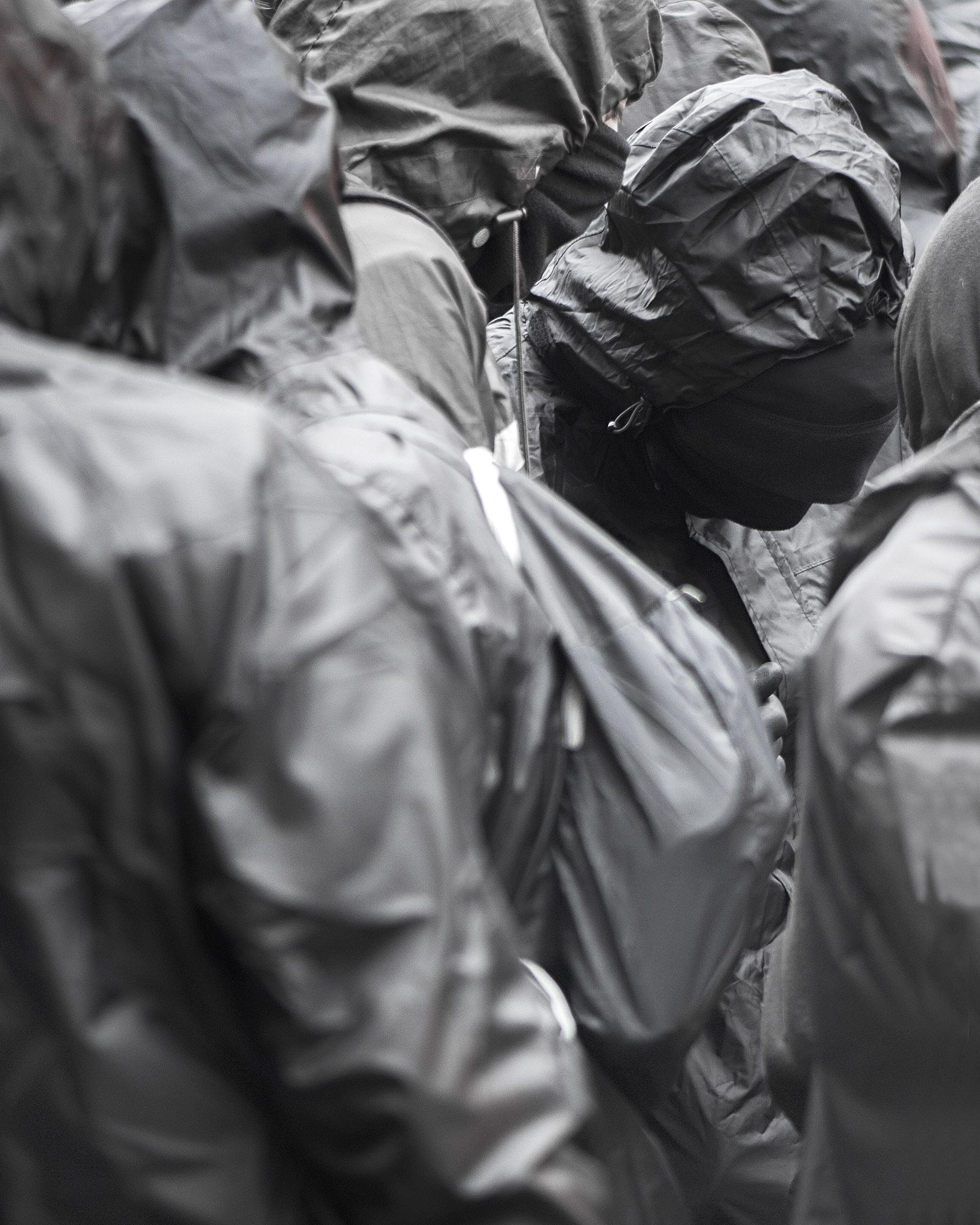
Ranging from Marine Le Pen to Pierre Laurent, the speakers come from across the political spectrum, and represent a wide range of views (while being strikingly white and predominantly male). But they also have access to an enormous media network, broadcasting words far beyond their immediate circle. The sheer number of cameras and microphones in Comar’s images is exaggerated, but in terms of a wider truth it barely scratches the surface.
Comar recently made a book of these images, titled Aujourd’hui (‘Today’) and published with Éditions 7L, winning the opportunity after being awarded the Photography Jury Grand Prix at Hyères Festival. The prize also gave him the chance to show his work during Paris Photo, where he displayed his images in a darkened room, picking out the politicians and lawyers with spotlights. The floor of the gallery was littered with pieces of paper, emitted by a small printer; hooked up to various newspapers’ online bulletins, it was spitting out 24/7 headlines.
“‘Donald Trump est le dernier avatar de la révolution conservatrice américain’. L’historienne Helene Harter analyse la victoire du candidat républicain et revient sur les sources de la popularité de ses idées” (“‘Donald Trump is the latest avatar of the American conservative revolution’. Historian Helene Harter analyses the victory of the Republican candidate and reviews the sources of the popularity of his ideas”) read the ticket I picked up, an uncannily apt snippet from French newspaper Libération.
Comar’s Aujourd’hui also includes images of TV news studios, shot when empty of people or updates; as with the images of talking heads, Comar was interested in the stage, not what goes on it. These studios are set up to deliver certain images and messages, he points out, information stripped of the wider context in which it is gathered, such as the media scrum, or the bastions of power promoting certain points of view. One of Comar’s studio shots includes a blank screen, for example, a frame and surface on which selected reels are projected; in the book this image is printed on a green page, rendering it almost a void.
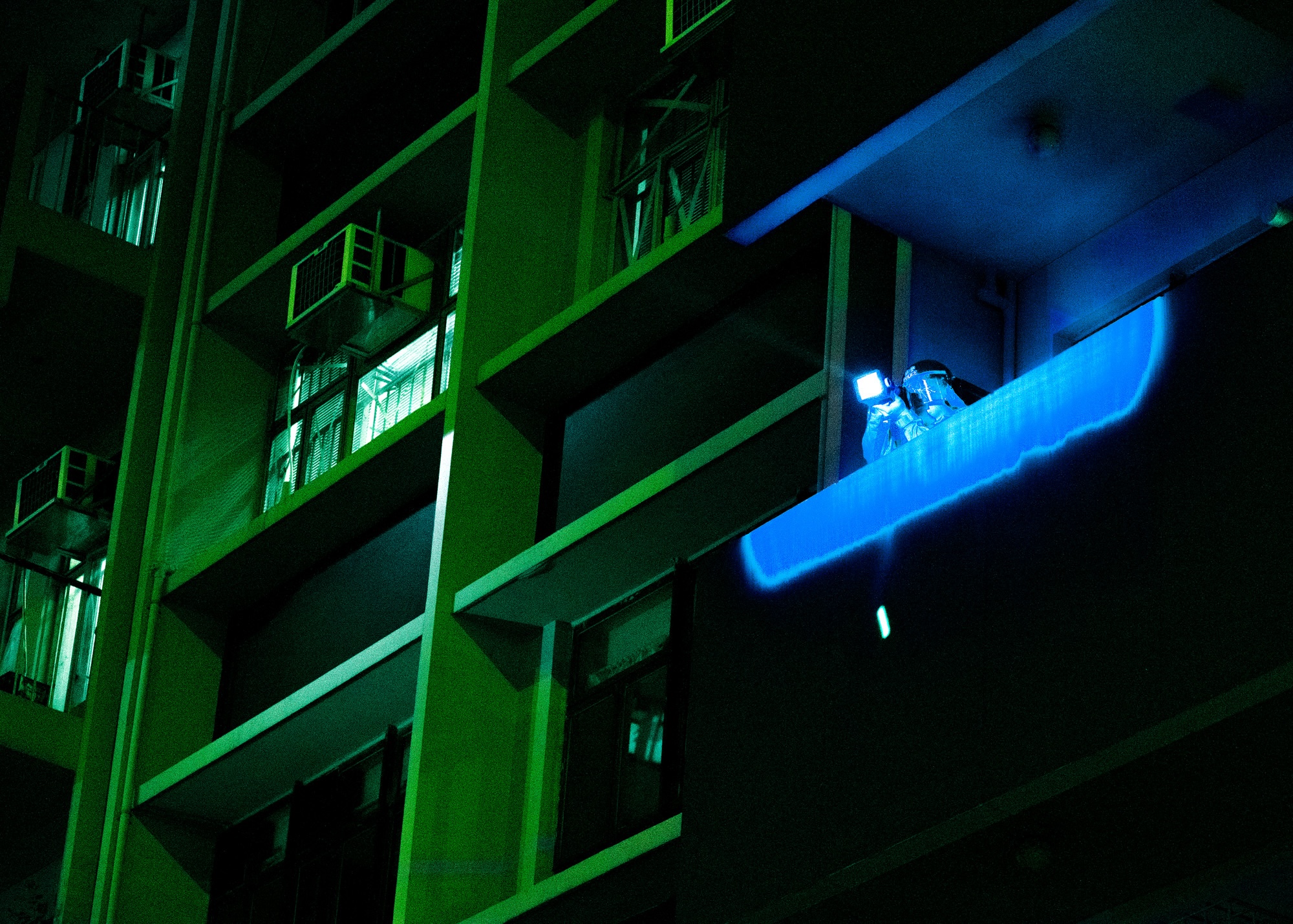
“We are getting information through a process that is very artificial and with massive manipulation,” Comar points out. “And the way we are getting this news and information makes it seem very separate to us, like it’s a bubble that is hard to touch. We are being informed, yet this information is kind of protected or removed.”
In the exhibition of Aujourd’hui, Comar suggested this sense of hermetic seal by displaying his images inside perspex boxes; transparent yet also a barrier, these cases were both a metaphor and a nod to a very physical manipulation of space. In the TV studios, he was struck by the sets, which are flimsy yet also powerful, organising information and the way we perceive it. Similarly, one of his early projects is titled Shaping Informations, and focuses on plexiglass lecterns. He met a man based in northern France who makes such lecterns, he explains, adding that they are popular with Republicans in the US because they lend authority to the speaker yet also imply he or she is transparent and therefore trustworthy.
The manufacturer let Comar take his archive of publicity shots, “already interesting because he is staging the objects on a blue background”, and, scanning them, Comar warped them into airy abstraction, removing sections to create “very light, linear objects that sit between 2D and 3D”. “I wanted to try to convey something of the nature of it, this kind of floating direction and information coming to us,” he explains. “It’s coming at us and yet it’s less and less traceable, you never know exactly how it is built.”
It is an understanding that evokes The Invisible Committee, and a section in The Coming Insurrection on environmental collapse which states: “What surrounds us is no longer a landscape, a panorama, a theatre, but something to inhabit, something we need to come to terms with, something we can learn from”. But this insight also nods back further, to France in May 1968 and to Guy Debord’s 1967 The Society of the Spectacle. “The spectacle is not a collection of images,” writes Debord, “rather, it is a social relationship between people that is mediated by images.”
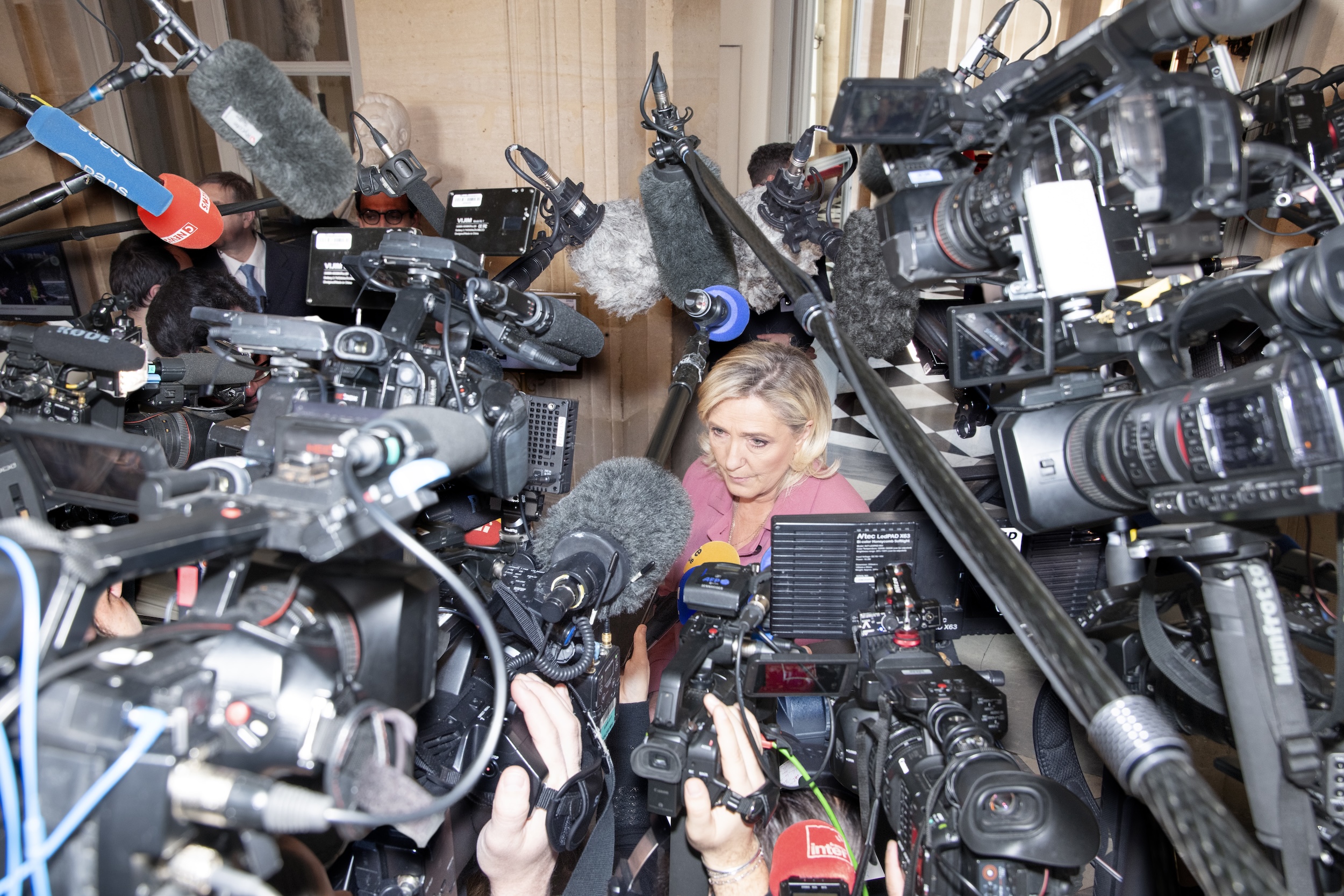
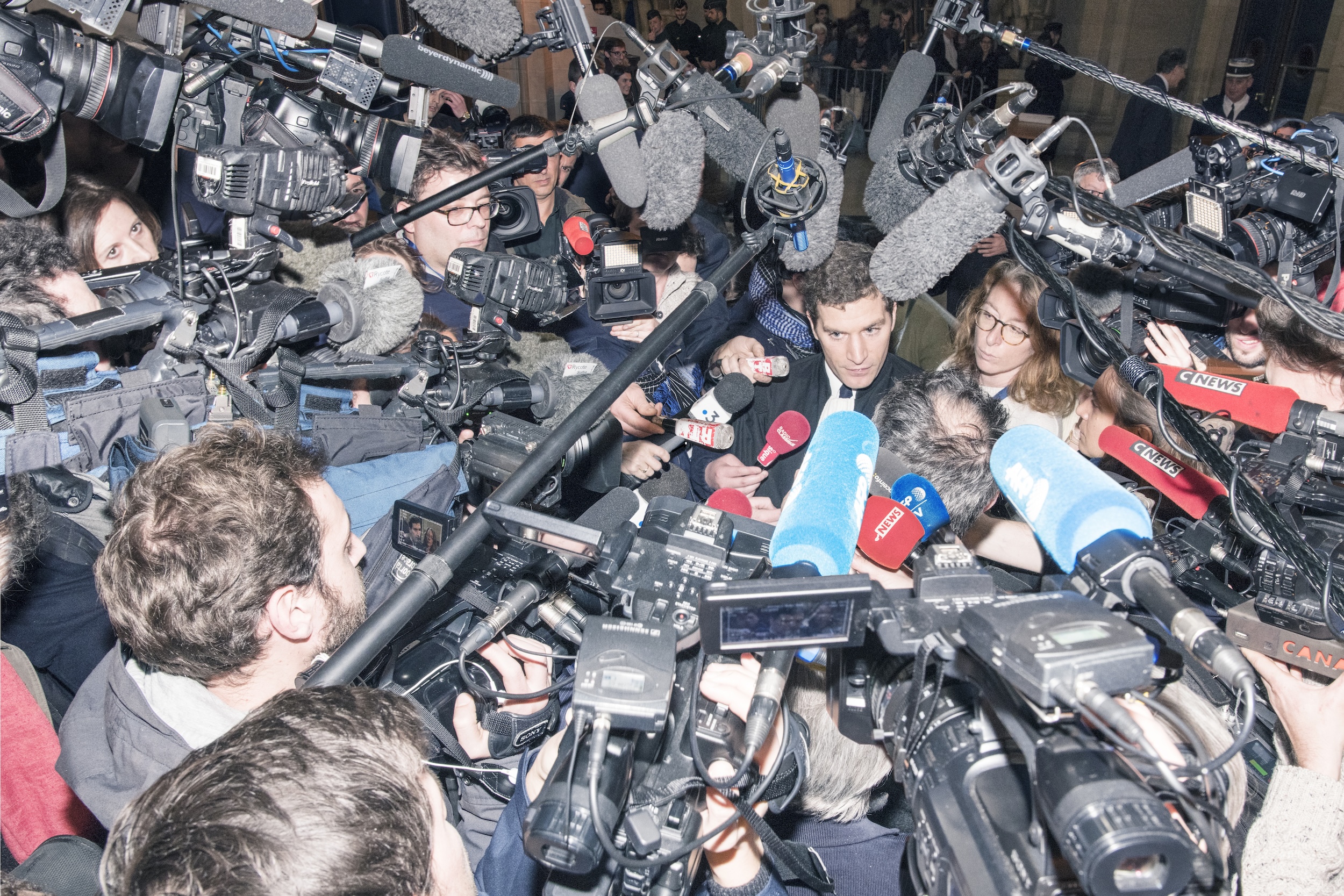
It is a tradition Comar has obliquely referenced, titling one of his series May 2018. Shot exactly 50 years after May 1968, this was a whole project on TV studios (which he drew on for Aujourd’hui). May 2018 also included images of trade union protests, however, actions which seem positive – in that they are people being active, not just consuming or spectating – but which Comar worries might just be feeding the press machine. “May 2018 is an investigation into the relationship between the media system and radical news,” he writes in his introduction. “Media elements are activated, information converges, temporalities are distorted, and a reality is revealed between transparency and opacity.”
Similarly his series 2017 won’t happen records anti-globalisation protests in Paris in 2016 and 2017, and specifically a new approach evolved in the face of police crackdowns – the ‘black bloc’. Dressing entirely in black, protesters aimed to evade identification and surveillance, but also create a powerful mass presence for the watching media. “It interests me that, if you do a protest, you want to create a spectacle that will be recorded by the press,” Comar explains. “But they wanted to avoid being identified personally. So on the one hand they are trying to court attention, but on the other they are also aiming to avoid it.”
This tactic also recalls The Invisible Committee, both its name and because of its rejection of the ‘representation’ often cited by contemporary image-makers. “When leftists everywhere continually make their cause more ‘visible’ – whether that of the homeless, of women, or of undocumented immigrants – in hopes that it will get dealt with, they’re doing exactly the contrary of what must be done,” reads The Coming Insurrection. “Not making ourselves visible, but instead turning the anonymity to which we’ve been released to our advantage, and through conspiracy, nocturnal or faceless actions, creating an invulnerable position of attack…
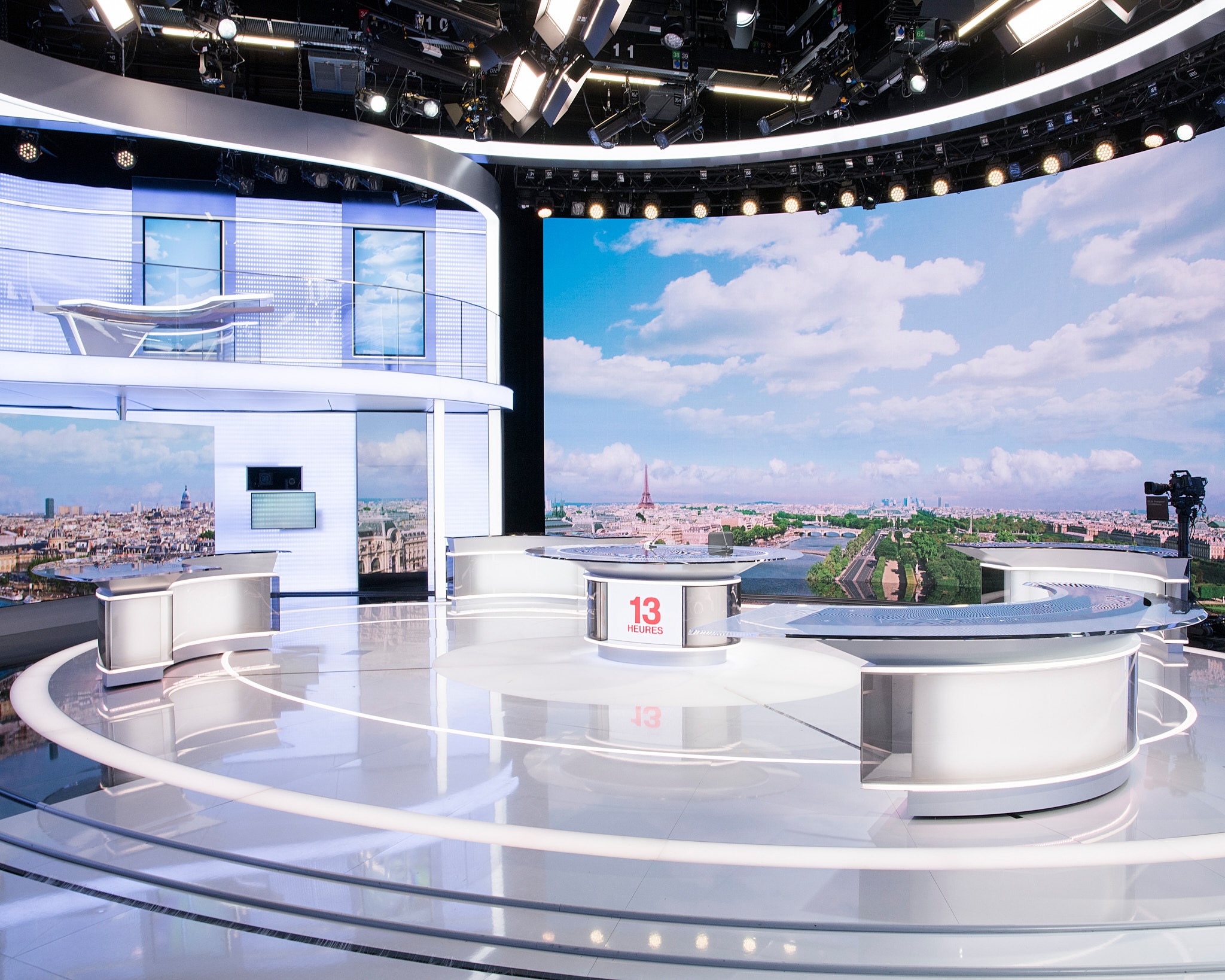
“To be socially nothing is not a humiliating condition, the source of some tragic lack of recognition – from whom do we seek recognition? – but is on the contrary the condition for maximum freedom of action.”
Comar is perhaps less optimistic than this text, writing in his introduction to 2017 won’t happen of “the war of images between police forces, demonstrators, and the media”, and stating he is isolating fragments to “enable viewers to recompose an image of their own”. For him, the media – and surveillance – have evolved so far that trying to evade them is futile. Instead we have to become more aware, and perhaps more actively involved. His interest in this ‘war of images’ took him to Hong Kong in 2019, partly because it was familiar, and partly because what was happening felt like Europe’s future.
“It seemed very much related to what I was seeing in Paris, and I knew from forums that people in Hong Kong were looking at what was happening in France,” he says. “They had the Umbrella Movement in 2014 but that was very quickly repressed by the police, so they were looking for the means to continue, and watching Paris riot videos online to learn tactics. But at the same time, the level of surveillance and repression [by the Hong Kong police], I thought ‘OK, maybe that’s the next step of response in Europe’.”
Spending four months in the territory, Comar recorded the protesters’ efforts to evade surveillance – and pepper spray – with face masks, goggles and umbrellas; he also recorded the lasers they employed to disrupt police cameras, and the drones used on both sides to gather intelligence. The protesters in Hong Kong also faced eavesdropping and infiltration, so they developed codewords to protect themselves, referring to protests as ‘dreams’, for example. Comar liked the metaphor – and the sense that a dream can be a nightmare – and titled his work How Was Your Dream?.
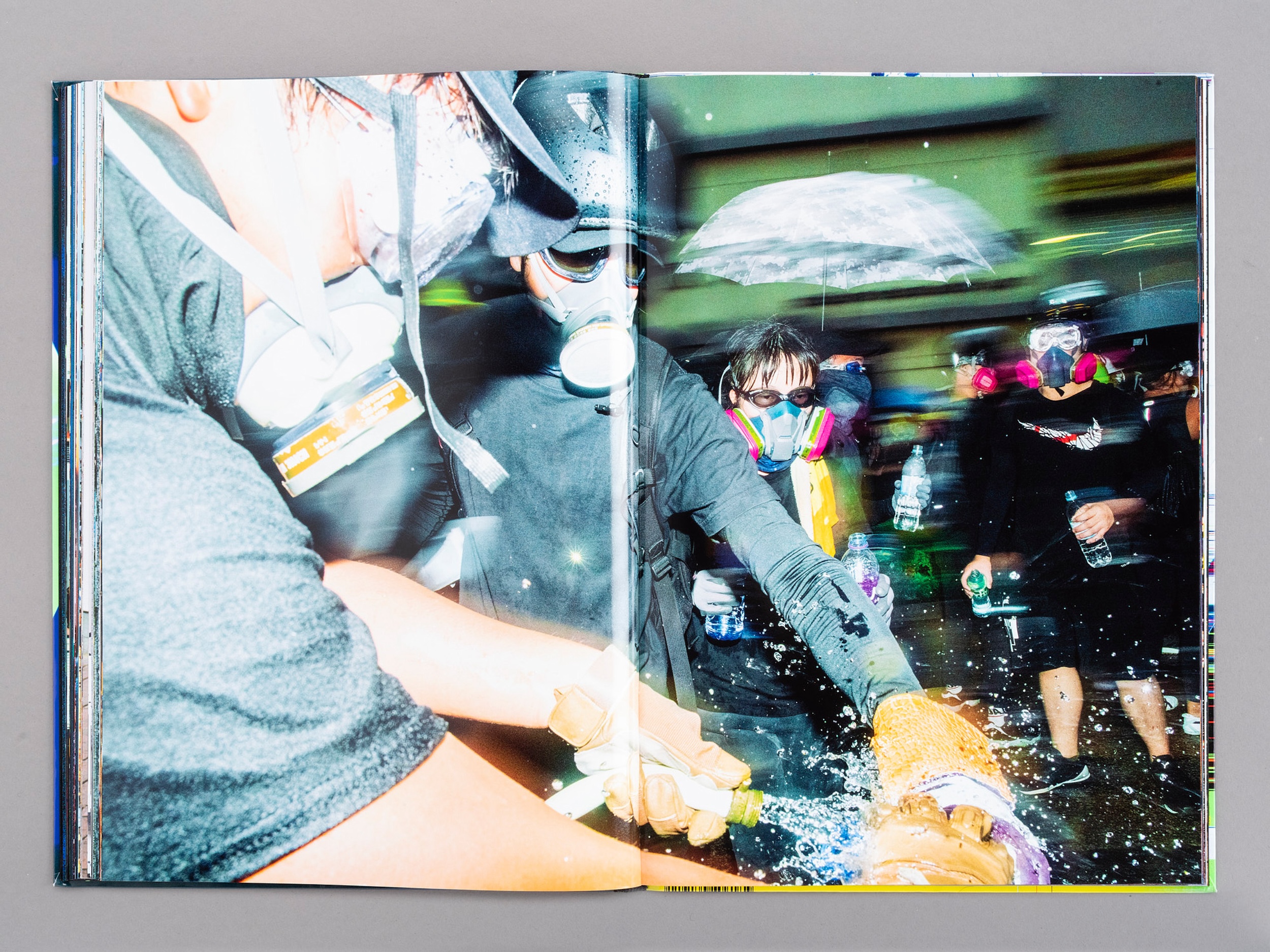
The series went on to be published by Mörel in 2022 and it is a semi-hallucinatory affair, printed with extra UV inks on glossy pages and drawing attention to itself as a medium, gathering fingerprints from whoever reads it. It is not a straight celebration of the protesters, because Comar is wary of the “gradual erasure of individuals” implied by the tactics they were forced to adopt. And it also is not the kind of straight documentary that aims to be a ‘window on the world’, because Comar knows that is impossible, particularly as a young Franco-Swiss man shooting abroad.
“I felt I was living through something very special, but also like I was some European lost in an Asian country,” he says. “At some point I was like, ‘What am I doing here?’. What was happening was so important for the people there, and having this European point of view, trying to photograph what I was interested in, felt very rude. But this idea of the dream felt like, OK, everybody is having their own experience of this, this could provide a way in that allows me to give my personal view, without implying I am giving the whole story.”
Cut to Paris in 2025 and the idea of the subjective take still interests Comar, as well as the desire to include photographers – and himself – in his work. He is keen to get back to taking photographs, having spent many hours on his computer assembling images for Aujourd’hui, but the projects he is researching still centre on the gap between reality and our vision of it. He is interested in photographing agriculture, for example, as – despite bucolic marketing material – we are already facing an industrial scramble for resources. He is also interested in photographing Paris, in contrasting his experience of living in the city with its promotion by tourist and luxury brands.
“It’s just an idea, but I feel it could be important,” Comar says. “We have such a chic, luxury approach now [to the city], it would be good to have a counterpoint. I’m interested in making more raw reportage but at the same time, I don’t have to produce images and sell them in the next 24 hours [to a newspaper]. I am more free, I have the opportunity to have this critical or funny vision. I feel that is a real chance and I want to grab it.”
Comar is not The Invisible Committee, and has not sabotaged any railways; he questions the drive for anonymity, particularly for members of the media – and includes himself in their number. But if “sabotaging the social machine with any real effect involves reappropriating and reinventing the ways of interrupting its networks”, perhaps he is also aligned with some Committee insights. In his own way, he is filling screens with white noise – or at least, drawing attention to the screens themselves. “There’s a very clear debate now on what is truth and what is post-truth, how truth is used by politicians, and the media, and the people who own the media,” he points out. “These issues are making it more obvious to everyone that we are manipulated by the media and by images. There is a lot of work to be done.”

